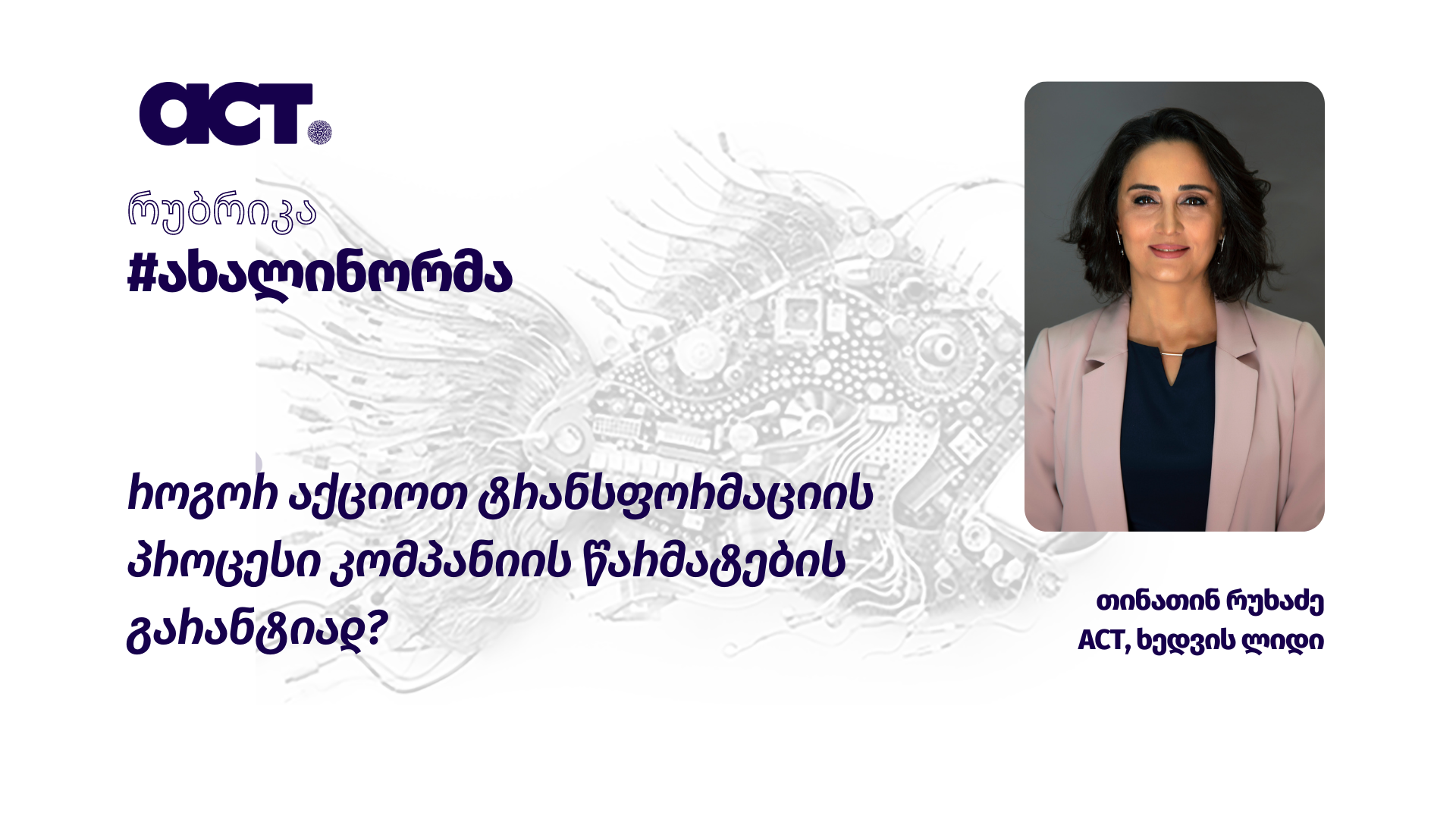„Culture is not just one aspect of the game – It is the game. In the end, an organization is nothing more than the collective capacity of its people to create value.“
Lou Gerstner, Jr. – IBM
We often come across of such a statement, in today’s world a transformation is not a choice, it is a new norm and whether you want it or not, the companies could not survive without it. But when is the best time to really transform an organization? Is it enough just to look at and look through the future of the industry and develop a new vision of the company to meet a new reality? Obviously, taking steps without having the right vision is more like wandering blindly in the forest, though in line with the vision it is most important to guess how sufficiently equipped we are; how much our values, competencies, skills, systems, or any other resources are capable to support us to follow the path to our future company with minor losses and essential creativity.
It is probably no news to anyone to say that the real transformation begins with one’s self. By realizing and analyzing the company's own leadership qualities, values, limiting beliefs and thoughts, and feeling its role and importance in the new vision of the company, the internal shifts that lead us to the first steps on the path of the change begin.
The key questions in the transformation process sound like this - where am I today and where do I want to be? What prevents me from getting where I want to get? What will help me to walk this path with minor losses and an environmentally friendly way? What are my leadership qualities and skills and what is my leadership energy like? In which role can I best demonstrate them?
These questions are quite difficult to answer, and if the company could not afford to create a field where the internal search process is invigorated, then the answers might also be superficial. Creating this field is the basis of a transformational organizational culture, and only on such a basement can a culture be built that can breathe with live, create and make a system shape accordingly to ensure the realization of a company's vision through the realization of individual human capabilities. The values in such a culture have a leading role where there is a vivid consensus in understanding them. All this is translated into the language of common game rules in daily activities, which is one of the major conditions to achieve the best results.
In today's fast-paced and unforeseeable world, revision of the structures and positions of the companies that have been successful for years but have lost their flexibility is now even more urgent and can no longer adequately respond to the challenges faced in the surrounding environment. Today it can be that in the same position, in the same company, different competencies and skills are prioritized for different time periods and that too is never enough. That is why it is extremely important to understand the roles together with the positions, to strengthen the team leadership along with the individual leadership, to meet the expectations instead of writing the detailed descriptions of functions and duties, to bring in the best results, to create projects to be done and to execute them as it is supposed according to project rules.
Too often in the companies where hierarchical systems are strictly determined, employees feel like being trapped within their own positions, often finding it difficult to see and recognize that the organizational vertical limits their ability to fully express themselves and their interests, while the brilliant results are achieved through flexible systems based on teamwork principles. In such hierarchical systems, the rules are canonized while the employees do not understand their importance, and the rules are followed without any enthusiasm, where it is forced, or even ignored, while horizontal arrangement and team principles vitalize the rule. The rule and the system can be understood not as a punishment, or as a hindrance, but as a support in order to do our job best. These are the changes that ACT underwent in the first stage of its transformation, as a result of which the organizational culture in the company today is a clear example of a living order.
Team play is seen as an integral part of a transformational organizational culture. It requires understanding and respect for your own and team members’ strengths and weaknesses. Successful team play is impossible without the ability to open up, recognize failure and success, share and self-reflection. It is also important to know how to speak a common language so that we do not lose our uniqueness; how to balance each other and overcome a task, the success of which often depends on the competence, skill, responsibility and concerted work of many people. Team leadership also implies the understanding of the fact that even the best qualities of a person can become a barrier if he is not in the right place and in the right role, and that all qualities are equally important for a magnificent success.
The Companies where equal importance is given to both the results and the way in which these results are achieved; as well as the Companies that are equally centered on the outside and the inside environment, achieve more glorious results, are innovators, and are resilient to storms threatened from the outside world.
ACT's unique management model, named The Power of Three, allows us to simultaneously see and implement the need for management and transformation in three areas. A real transformation is possible only if you have a clear vision of where you are going, and share the relevant values needed to realize that vision while they should come right from your heart. This could be done best through the development of systems and enforcement mechanisms. In such a model, the culture is congruent and organic to each employee of the company and ensures the maintenance of vitality and sustainability.






